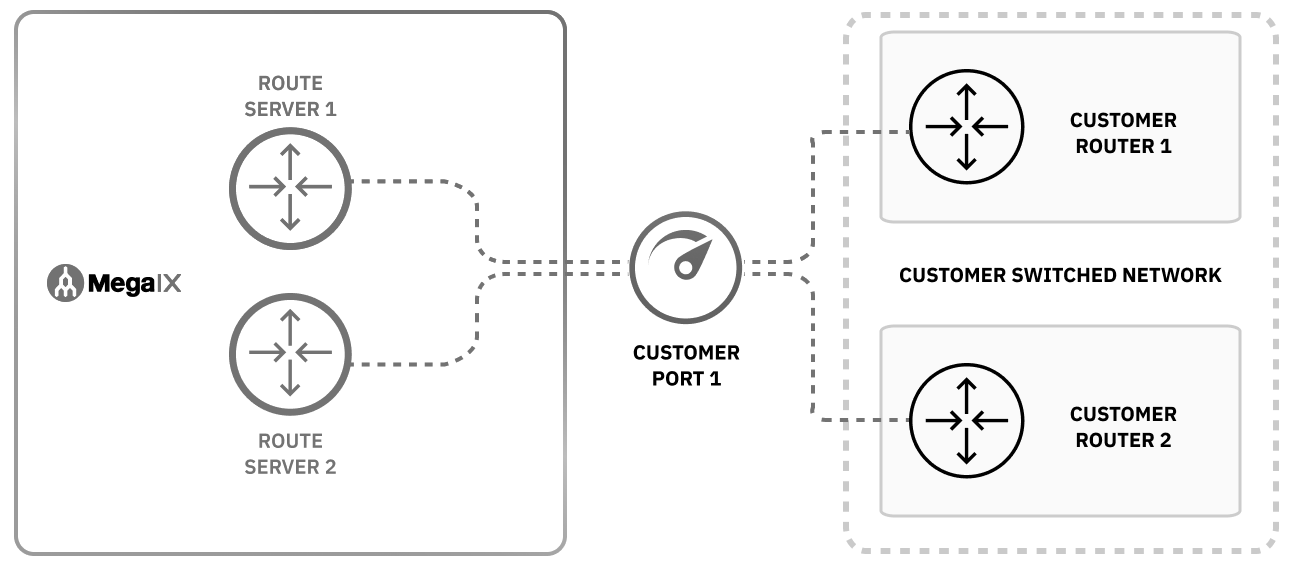Configuring IX Redundancy
To ensure high availability and reliability of your IX service, it’s critical to follow best practices for redundancy. This topic describes the recommended configuration, along with the configurations to avoid.
The following is a summary of requirements:
- Peering: Every IX service must peer with both route servers.
- Layer 2 isolation: Customer routers must not share the same Layer 2 domain.
-
Redundancy:
- Requires two separate Ports.
- Both IX services must peer with both route servers.
- Each router must operate on a distinct Layer 2 domain.
Recommended configuration: single and redundant IX
Single IX configuration
For basic configuration:
- Peer with both route servers to ensure redundancy within the IX.
- Do not share a Layer 2 domain on the customer side, that is, avoid using a switched network.
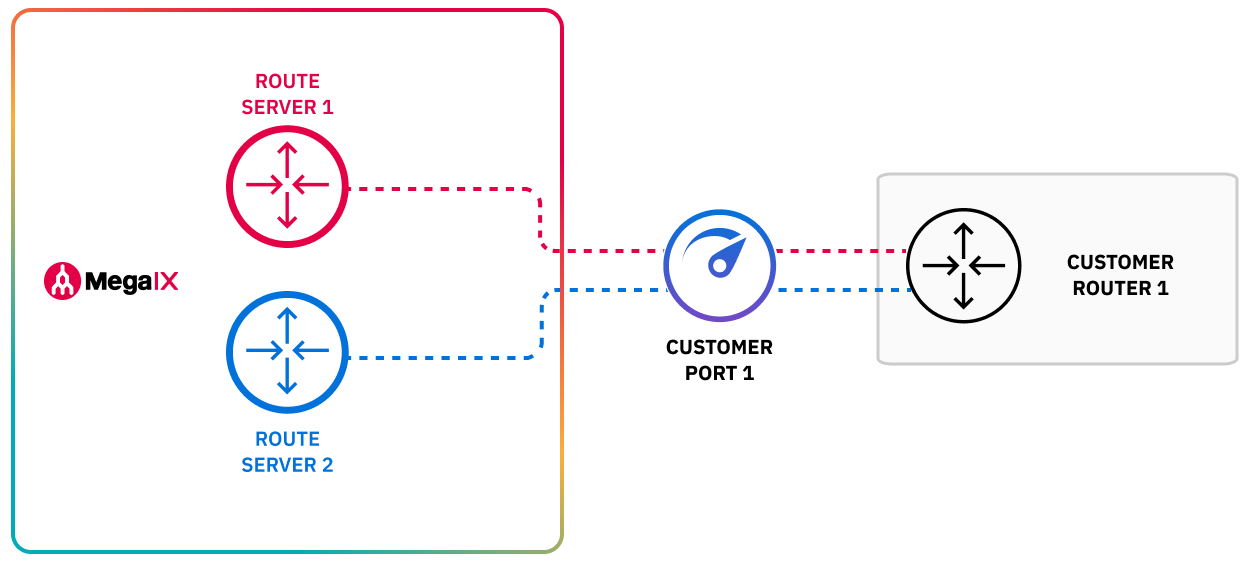
Redundant IX configuration (recommended method)
For optimal redundancy and reliability, we recommend the following configuration:
- Use two separate Ports to connect to the same IX.
- Each IX service must peer with both route servers.
- Ensure each router is on its own Layer 2 domain (do not share a switched network between routers).
This approach ensures high availability and minimizes the risk of service disruptions caused by network failures.
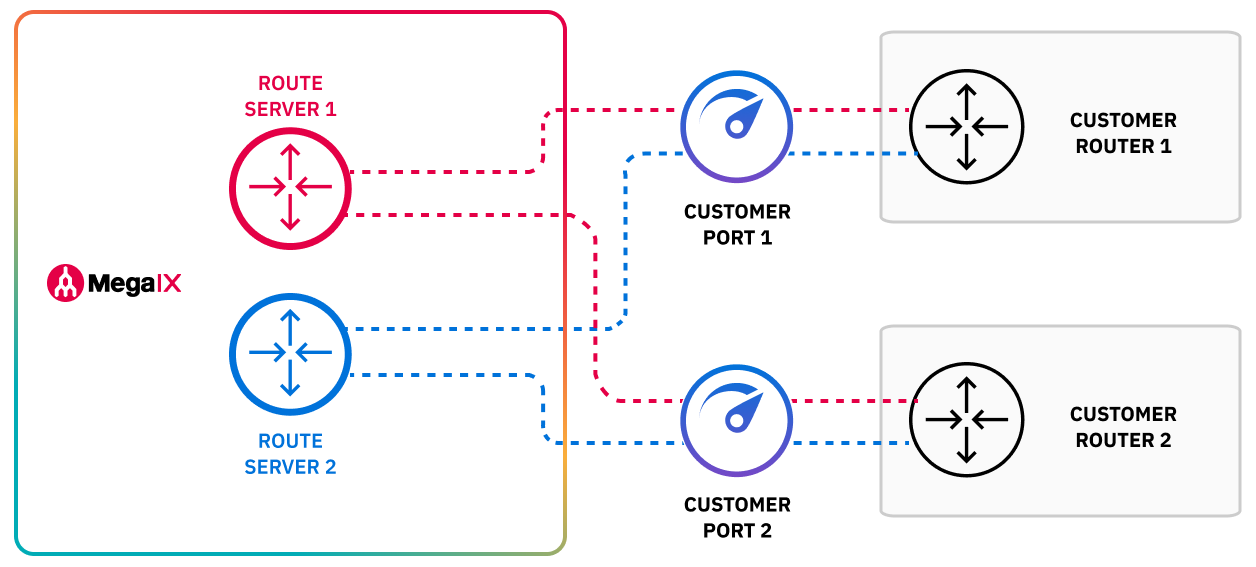
Configurations to avoid
Not recommended or unsupported configuration
These configurations are problematic and prone to outages:
-
Using a switched Layer 2 network on the customer side, which can introduce loops and instability.
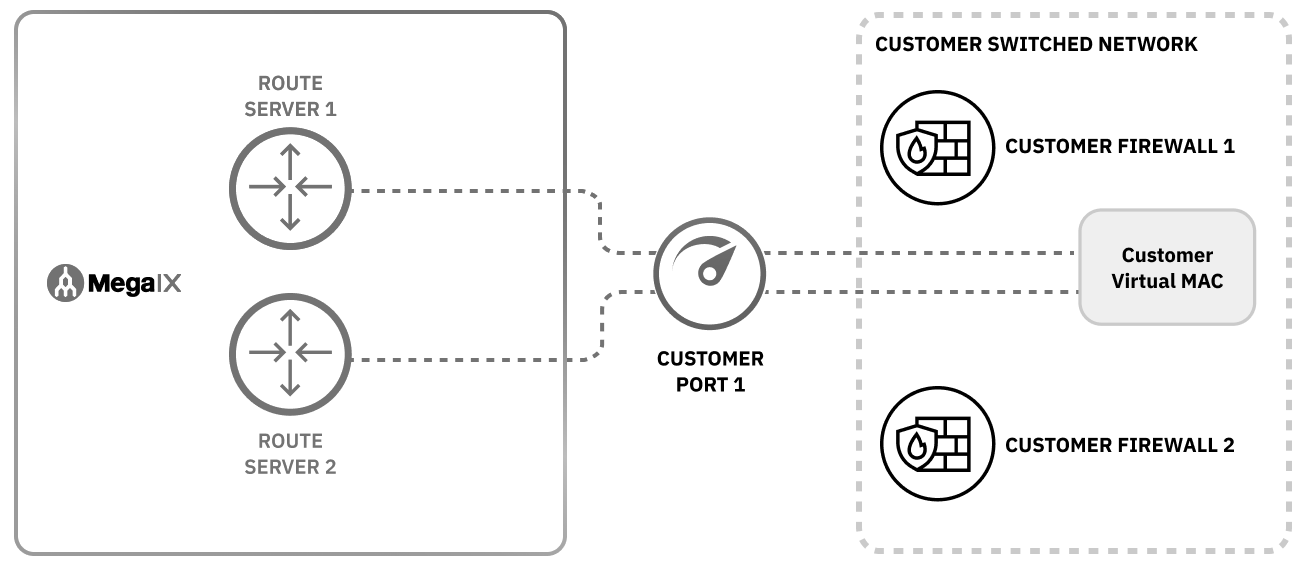
-
Using two services for redundancy and only peering with one route server.
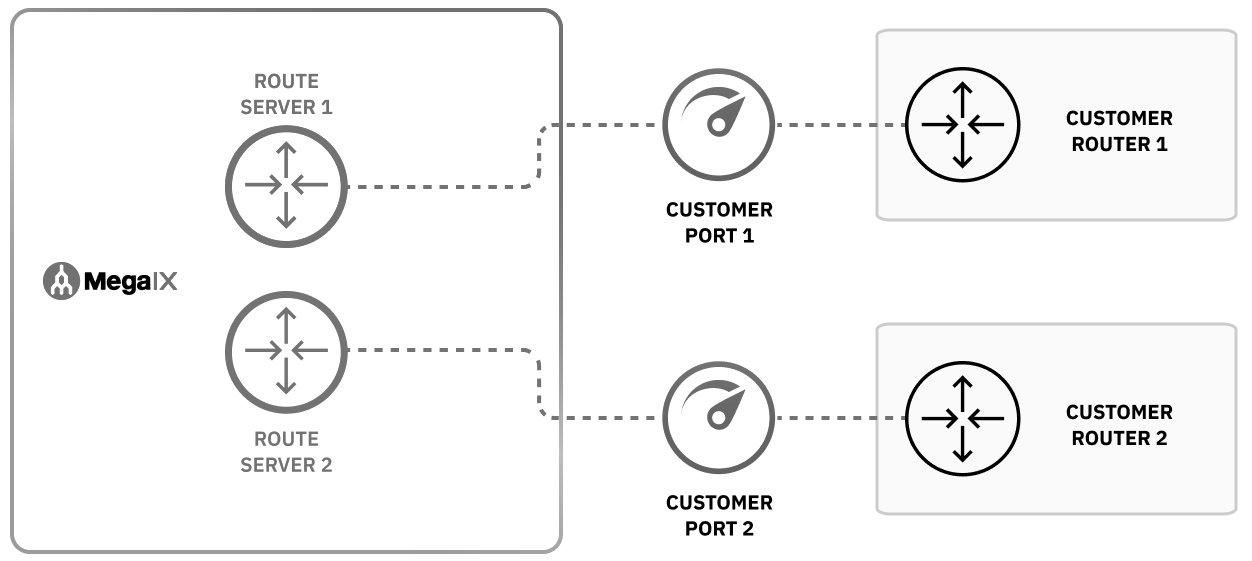
Invalid configuration
This configuration will not work and is unsupported:
-
Connecting a single IX service to a switched network with multiple customer routers.
